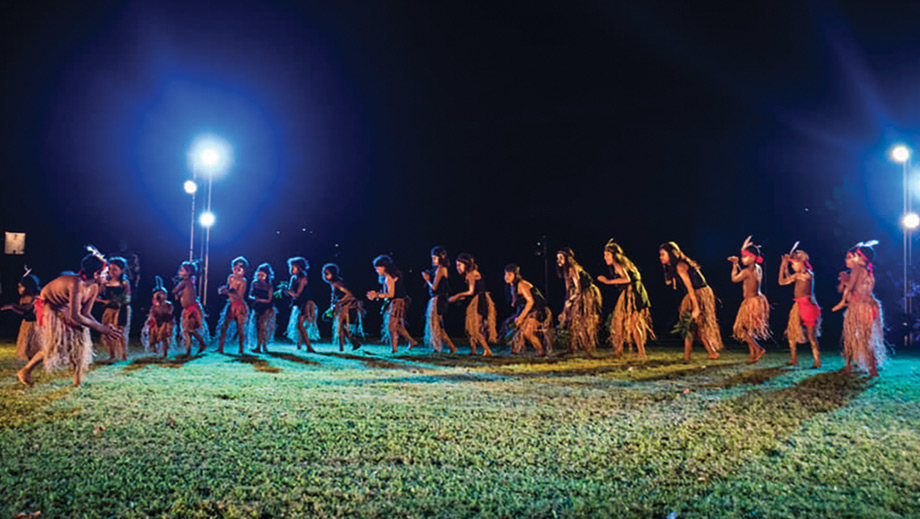Achieving reconciliation and reconnection through a re-remembering of our past
Charlotte Ward explores how a shared history and re-remembering popular narratives from the past brought about reconciliation and reconnection to the local community of Cooktown
It is some 250 years since the Endeavour limped into what is now known as Cooktown, in North Queensland. There, Cook has been remembered conflictingly as the town’s founder and as the instigator of violence towards Guugu Yimithirr people. Yet, from the late 1990s, as the Guugu Yimithirr people successfully concluded their native title claim, community members in Cooktown actively came together to re-remember and re-write their history in an exchange that has facilitated very real processes of reconciliation within the local community.
Cooktown has held an annual re-enactment of Cook’s visit since 1959, at the centre of which, until 2008, was a possession ceremony borrowed from Possession Island, where Cook raised the Union Jack and claimed the east coast for Britain. But as Indigenous Elder Eric Deeral and actor and local resident John MacDonald began re-visiting the script, they were drawn to the evidence in Cook’s journals of Guugu Yimithirr people’s connection to Country. In particular, they were struck by an exchange between an old Guugu Yimithirr man and Cook towards the end of the Endeavour’s stay.
After a hostile dispute over the Endeavour crew’s hunting and capture of 12 turtles, Guugu Yimithirr men set the coastline alight, engulfing some of the crew’s belongings and a pig. The British fired their guns, Guugu Yimithirr men threw spears and the tension was heightened. But this exchange did not end as we might expect. After some time had passed, an old man stepped out of the bush, wiping his armpits and inhaling the sweat from his hands, holding a spear without a point. Cook saw this as a sign of peace and approached him, returning the spears Guugu Yimithirr men had thrown earlier, which Cook believed ‘reconciled everything’.
This exchange between the old Guugu Yimithirr man and Cook became the central focus in the work of reinterpreting and remembering Cook’s visit. The performance became educative as well as commemorative, as it began to move away from its monumental origins as a possession narrative and began to reveal other truths to community members about the landscape they occupied and the traditional owners of that land. Through their research, community members discovered that the site on which Cooktown was built was a place of neutrality – it was used for birthing and was a meeting place where no blood was to be spilled. They further learnt that the ceremony performed by the old man was ngalangundaama – a ceremony for peace. Moreover, the disagreement between Cook and the Guugu Yimithirr men shed light on hunting practices that worked with the seasons – helping to explain the local men’s anger about the dead turtles they saw on the deck. The research became much more than re-scripting the past, it became a pedagogical process of exchange between two cultures.
Revising this encounter was more than just re-scripting the re-enactment: it was a process of revising popular history that had previously overshadowed, indeed denied, the Guugu Yimithirr people’s rights to their Country. Their participation as co-authors of the story, and as prominent participants in the performance, contributed to replacing denial with recognition.
In 2019, I visited Cooktown to participate in the annual Discovery Festival, which featured the new re-enactment. Performances shared stories from the past, most of them difficult and some of them hopeful. They were successful because they promoted truth-telling by creating a space where more difficult histories could be shared publicly: the re-enactment acts as a site of negotiation, enabling local residents to act out their history together.
Local Bulgun Warra man and the Indigenous Project Officer and Indigenous Guide at the James Cook Museum Harold Ludwick, who I had the pleasure of spending time with in Cooktown emphasises that we still need to have the conversations about the dispossession that took place after Cook and about Indigenous views on history. He argues that the performance of reconciliation should not overshadow the history of violence and dispossession that also took place; these stories still need to be told and their ongoing issues resolved.
Reconciliation Australia explains: ‘A key challenge in the reconciliation movement has been overturning the cult of disremembering and the great Australian silence when it comes to our true history’. Perhaps the takeaway from the Cooktown community is that history is a product of memory and therefore it can be constructed and reconstructed to engage with present concerns. At the local level, memories of popular narratives like Captain Cook can be re-made apart from their national status, used as a basis for local, and tangible, reconciliation.




